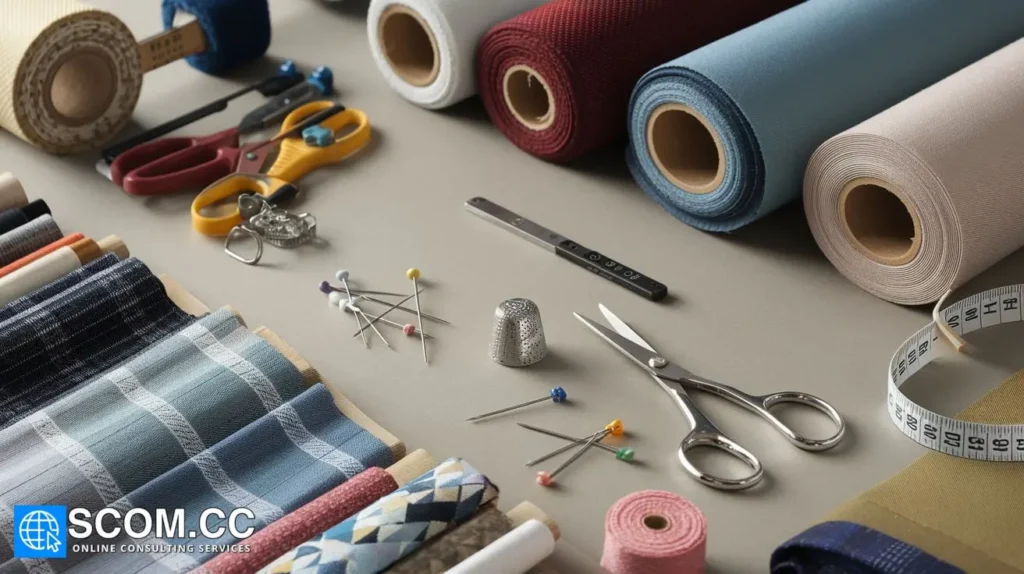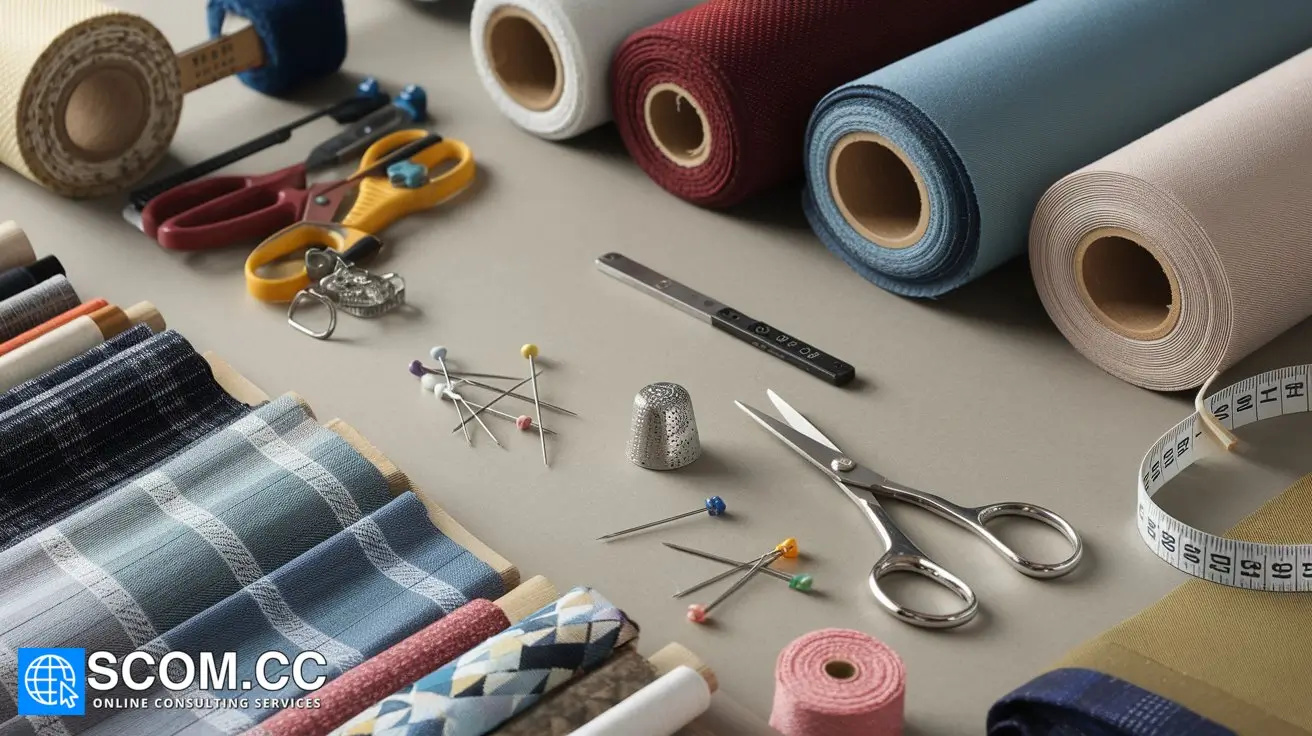The Essential Tools Every Tailor Needs in Their Workshop

The Essential Tools Every Tailor Needs in Their Workshop
In the world of tailoring, precision, craftsmanship, and efficiency are paramount. To achieve these, a well-equipped workshop is essential. From classic hand tools to modern technology, having the right equipment can significantly enhance a tailor's ability to produce high-quality garments. This article provides a comprehensive guide to the essential tools every tailor needs in their workshop, ensuring that professionals and enthusiasts alike are well-prepared to tackle any tailoring project.
1. Measuring Tools
1.1 Tape Measure
A tape measure is indispensable for any tailor. It allows for precise measurements of various body parts, ensuring that garments fit perfectly. High-quality tape measures should be flexible, durable, and easy to read. A retractable tape measure with both metric and imperial measurements is ideal for versatility.
1.2 Measuring Ruler
A measuring ruler, often made of metal or plastic, is essential for marking and measuring fabric. This tool is particularly useful for creating straight lines and ensuring accurate measurements during pattern drafting and cutting.
1.3 French Curve
A French curve is a specialized tool used for drawing smooth, curved lines. It is particularly useful for creating armholes, necklines, and other curved elements of a pattern. This tool allows for precise and consistent curves, which are crucial for achieving a perfect fit.
2. Cutting Tools
2.1 Fabric Scissors
Fabric scissors are designed specifically for cutting through fabric without causing fraying or distortion. They should be sharp, precise, and comfortable to handle. A good pair of fabric scissors is essential for achieving clean cuts and maintaining the quality of the fabric.
2.2 Rotary Cutter
A rotary cutter is a versatile tool that can cut through multiple layers of fabric with ease. It is especially useful for cutting intricate patterns and curves. When used with a cutting mat, a rotary cutter provides accurate and efficient cutting.
2.3 Pinking Shears
Pinking shears are used to create a zigzag pattern along the edges of fabric. This pattern helps to prevent fraying and unraveling. Pinking shears are an essential tool for finishing raw edges and ensuring that garments maintain their integrity over time.
3. Sewing Tools
3.1 Sewing Machine
A sewing machine is the cornerstone of any tailoring workshop. Modern sewing machines come with a range of features, including multiple stitch options, automatic threading, and adjustable presser feet. A high-quality sewing machine should be durable, reliable, and capable of handling various types of fabric.
3.2 Hand Sewing Needles
Hand sewing needles are essential for tasks that require a finer touch or where a sewing machine cannot reach. They come in various sizes and types, including sharps, ballpoints, and embroidery needles. Having a selection of hand needles ensures that you can tackle any sewing task with precision.
3.3 Thread and Bobbins
A variety of thread and bobbins are crucial for different sewing tasks. Thread should be strong and suitable for the type of fabric being used. Bobbins should be compatible with your sewing machine and regularly checked for any issues that might affect the stitching quality.
4. Pressing Tools
4.1 Iron
An iron is essential for pressing seams, removing wrinkles, and ensuring that garments maintain their shape. A steam iron with adjustable heat settings is ideal for working with different types of fabrics. For professional results, consider an iron with a pointed tip for precision pressing.
4.2 Pressing Ham
A pressing ham is a contoured tool used for pressing curved areas of garments, such as sleeves and darts. Its shape allows for accurate pressing of these areas, helping to achieve a well-fitted and professional finish.
4.3 Sleeve Board
A sleeve board is a smaller ironing board designed specifically for pressing sleeves and other narrow areas of a garment. Its compact size makes it easy to handle and ensures that even the smallest details are attended to.
5. Pattern Making Tools
5.1 Pattern Paper
Pattern paper is used for drafting and altering patterns. It should be lightweight, durable, and easy to mark and cut. Options include plain pattern paper or grid-patterned paper for added precision.
5.2 Pattern Weights
Pattern weights are used to hold patterns in place while cutting fabric. They are typically made of metal or heavy plastic and help prevent the pattern from shifting. This tool ensures accurate cutting and reduces the risk of mistakes.
5.3 Tailor's Chalk
Tailor's chalk is used for marking fabric and patterns. It is easily erasable and allows for precise markings that do not damage the fabric. Tailor's chalk comes in various forms, including pencils, blocks, and pens, offering flexibility for different marking needs.
6. Finishing Tools
6.1 Seam Ripper
A seam ripper is an essential tool for removing stitches and correcting mistakes. It allows for precise and clean removal of seams without damaging the fabric. A high-quality seam ripper should have a sharp, pointed blade and a comfortable handle.
6.2 Fabric Glue
Fabric glue is used for temporary holds and quick fixes. It is particularly useful for securing hems, appliqués, and other details before sewing. Fabric glue should be designed specifically for textiles to ensure that it provides a strong bond without damaging the fabric.
6.3 Bias Tape Maker
A bias tape maker is used to create bias tape from fabric strips. Bias tape is useful for finishing edges and adding decorative touches. The tool allows for precise and consistent tape-making, which is essential for professional-looking results.
7. Organizational Tools
7.1 Tool Caddy
A tool caddy helps keep your sewing tools organized and easily accessible. It can hold items such as scissors, needles, pins, and threads, ensuring that everything you need is within reach.
7.2 Sewing Machine Accessories
Sewing machine accessories such as extra presser feet, needle sets, and bobbins should be stored in an organized manner. Keeping these accessories in a designated area helps prevent loss and ensures that you can quickly find the right tool for each task.
7.3 Fabric Storage
Proper fabric storage is essential for maintaining the quality of your materials. Use bins, shelves, or rolls to keep fabric organized and free from dust or damage. Proper storage also helps in managing your fabric inventory and planning projects effectively.
Conclusion
Equipping a tailoring workshop with the essential tools is key to achieving high-quality results and maintaining an efficient workflow. From measuring and cutting to sewing and finishing, each tool plays a vital role in the tailoring process. By investing in these tools and keeping them well-maintained, tailors can ensure that they are well-prepared to handle any project with precision and skill.

To explore more about tailoring, visit our Blog of Tailoring. If you have any questions or need assistance, go to our contact page. Additionally, you can find more information about tailoring and consulting at this tailoring and consulting portal.

Leave a Reply